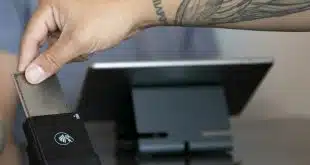The business of routing payment card transactions has been much in the news lately, first with a bill that would legislate network choice for credit card transactions and then with action by the Federal Reserve to reinforce a requirement that was supposed to guarantee merchants a choice of networks for debit card transactions.
The two actions have precisely one man in common—Sen. Richard Durbin of Illinois, whose interest in the arcana of payment card competition seems never to wane. He proposed earlier this year to bring downward pressure on merchants’ credit card acceptance costs by requiring that merchants have a choice of at least two unrelated networks for processing. If one network is Visa, the other can’t be Mastercard.
That may sound familiar. A dozen years ago, Durbin shepherded legislation into law that required that merchants have a choice of unrelated networks for debit card transactions. The legislation—which ultimately became an amendment to the massive Dodd-Frank Act—also included a provision that capped debit card transaction fees for large issuers. No such cap is part of Durbin’s credit card proposal.
Time will tell how the credit card version will turn out. As it happens, however, the payments industry after all these years is still adjusting to the debit card provisions—which, agree with them or not, are the law of the land. So wayward has the industry been in this respect that the Federal Reserve finally had to issue a requirement last month clarifying that yes, issuing banks really do need to enable two unrelated networks for their debit cards.
Now, this column has never been particularly sympathetic to non-market solutions to competitive issues. But neither has it been keen on willful subversion of the law. Many banks have offered the excuse over the years that networks not called Visa or Mastercard simply can’t handle aspects of modern debit card technology, such as PINless debit. Lately, too, some have argued that only Visa or Mastercard can decipher their own tokens—the technology that masks actual card account numbers. Merchants have howled over the years that workable solutions exist for both issues.
We don’t pretend to any deeper understanding of this argument than the reasonably informed observer. But we have the conviction that none of these arguments by the banks actually holds water. Here’s why. You may feel—as we do—that the law rests on faulty premises, but the law is the law. If banks are required to enable routing via a choice of networks, with the inclusion of capable systems like NYCE or Shazam, then that’s what they must do. A dozen years of unlawful practice is enough.
—John Stewart, Editor john@digitaltransactions.net




